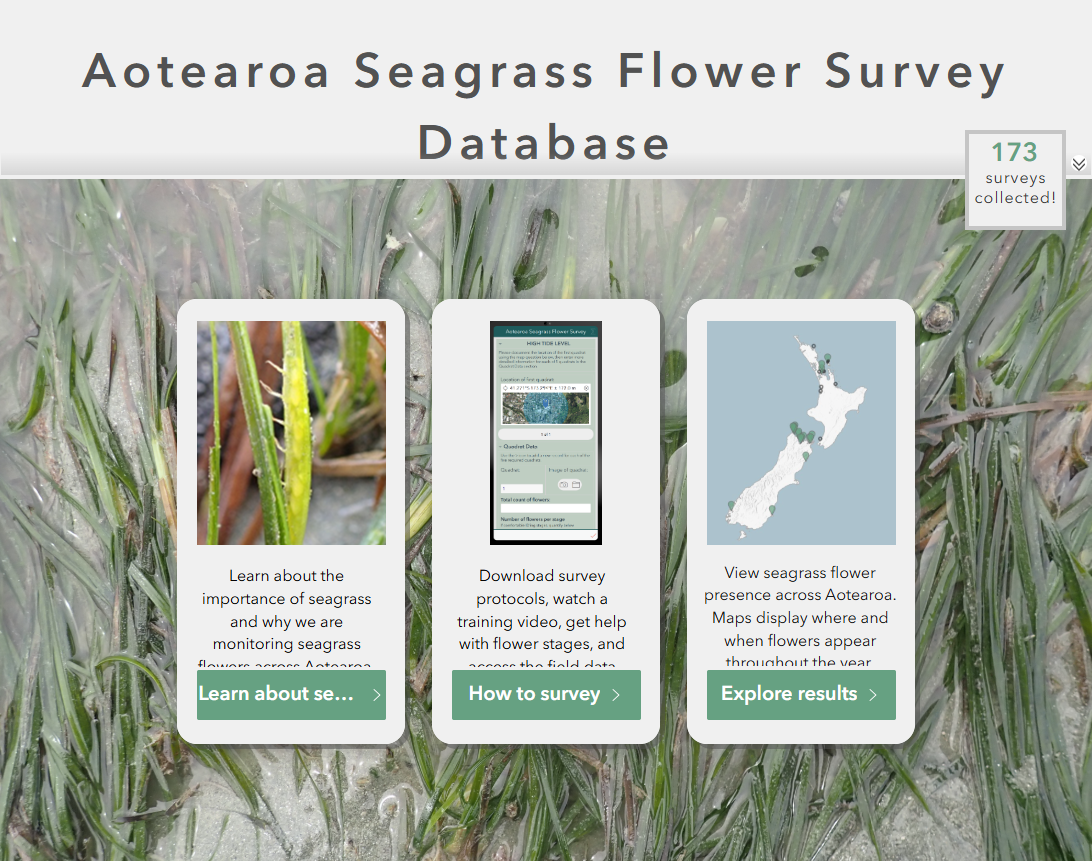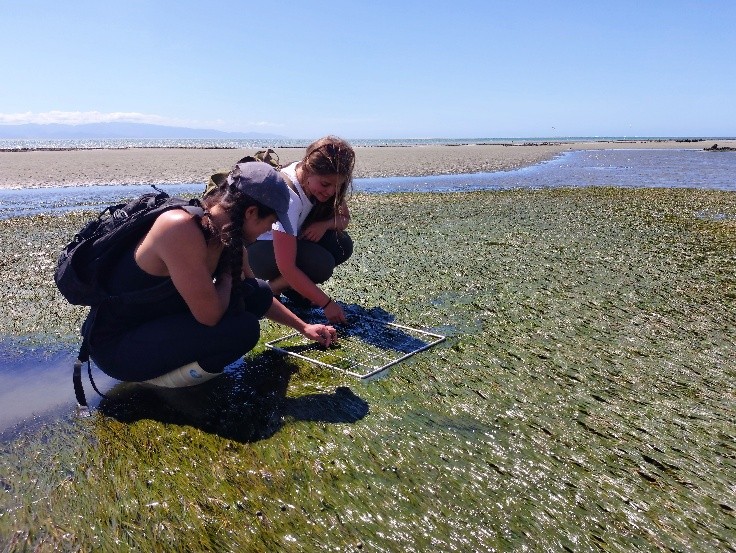New national database to map seagrass flowering
20 October 2025
Cawthron scientists are working alongside communities to restore one of Aotearoa New Zealand’s most valuable, but often overlooked, coastal habitats: seagrass meadows. To advance this work, Cawthron has launched a new national database and mobile app that empowers communities to collect and share flowering data to support seagrass restoration efforts.
Restore the Meadows is a multi-year research programme that aims to pioneer seagrass restoration techniques for Aotearoa New Zealand. Seagrass is a marine flowering plant that forms vast underwater meadows in estuaries and harbours. These meadows are biodiversity hotspots, natural water purifiers, and important carbon stores that help combat climate change.
“Seagrass meadows are an essential part of healthy coastal ecosystems,” says programme co-leader Dr Dana Clark. “They filter water, stabilise sediment, and provide habitat for fish and shellfish. When we protect and restore them, we’re protecting the foundation of our coastal food webs and the communities that depend on them.”
The programme’s goal is to make seagrass restoration accessible to communities across the motu. Last year, the team released a step-by-step blueprint for planning and carrying out seagrass restoration projects, empowering local groups with practical tools and scientific guidance.
A key focus is understanding when and where seagrass flowers. Flowers produce seeds, and seeds are the foundation of new meadows. To support this, Cawthron researchers have developed the Aotearoa Seagrass Flower Survey Database – a national hub where community members can record flowering observations. These data will help identify the best times to collect seeds, reveal regional differences in flowering, and ensure sustainable harvesting practices.
“This is science people can do themselves,” says Dr Clark. “By checking your local seagrass meadow for flowers and sharing what you find, you’re directly contributing to the restoration knowledge base. Every observation helps us understand how these systems work and how to bring them back to health.”
Anyone can take part, and spring and summer is when people are most likely to discover flowers. Participants simply visit their local seagrass meadow, look for flowers, and upload their findings via a new mobile app. Those considering restoration projects can go further by carrying out monthly flower surveys to track patterns over time. Training videos and detailed survey protocols are available on the Cawthron website to guide new participants.
Dr Clark says the project reflects Cawthron’s broader mission of protecting and enhancing aquatic environments through collaboration and applied science.
“Restoration on this scale can only happen when science and community come together,” she says. “By sharing tools and knowledge, we’re building the capacity for people across Aotearoa to care for the ecosystems that sustain us all.”
Every survey makes a difference. Together, communities and scientists are building a clearer picture of seagrass flowering across Aotearoa, taking vital steps toward restoring these underwater meadows for future generations.
Restore the Meadows is made possible thanks to the support of mana whenua and partnerships with: the Clare Foundation, OneFortyOne, Port Nelson, Friends of Nelson Haven and Tasman Bay, University of Waikato, and Nelson City Council. Cawthron is also grateful to everyone who has supported this project in the past — your contributions continue to make a difference.

